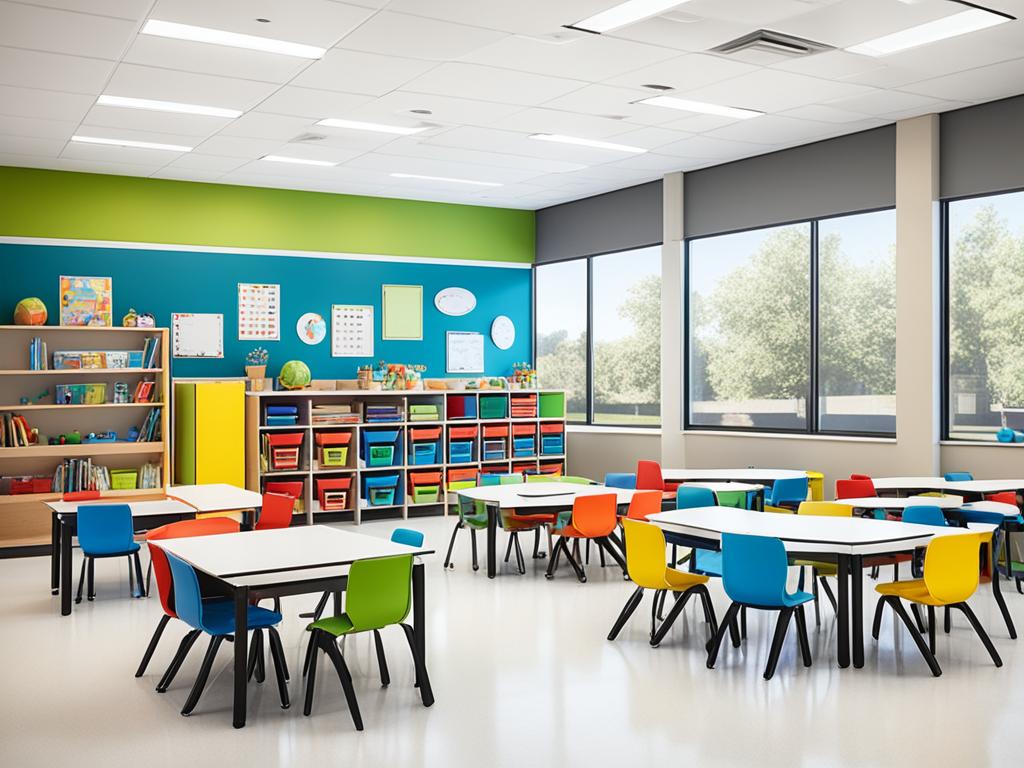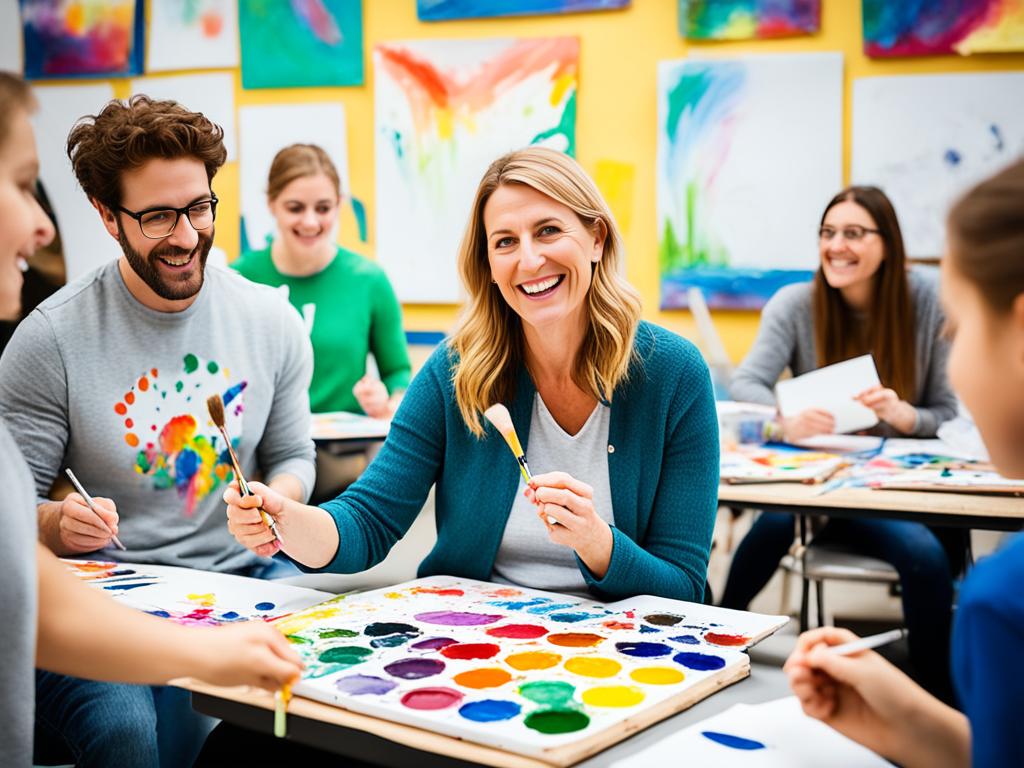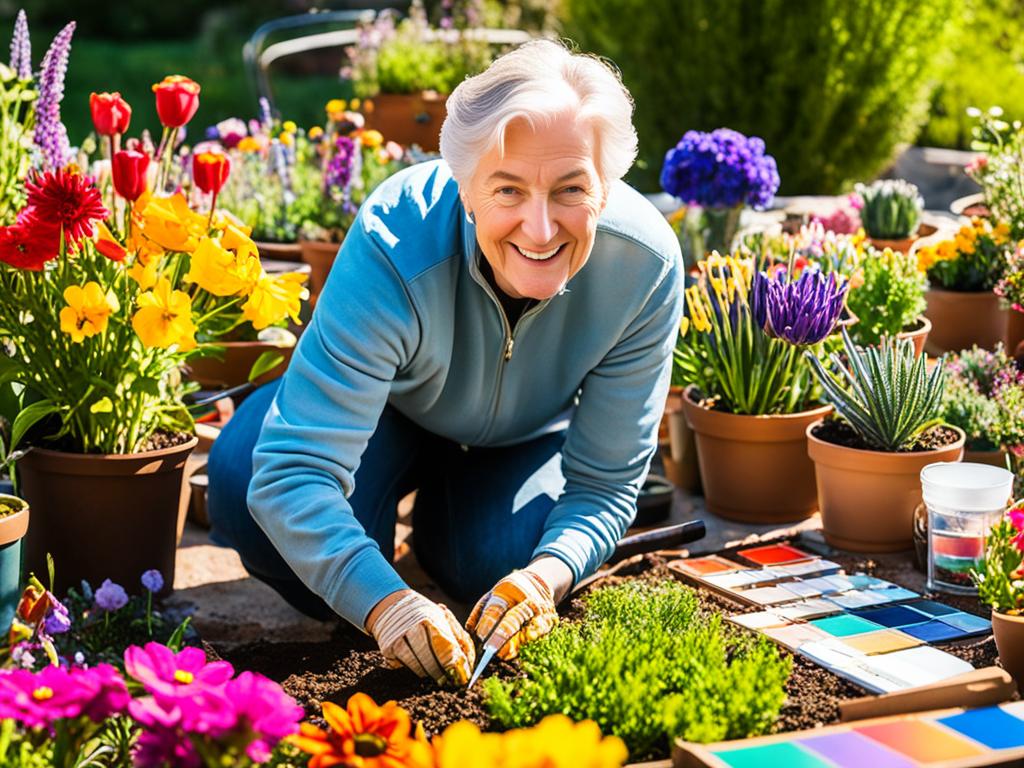- 1. The Importance of Creative Thinking
- 2. Defining Creative Learning Environments
- 3. Strategies for Promoting Creativity
- 4. The Role of the Teacher
- 5. Creative Education Programs
- 6. Assessment in Creative Learning
- 7. Overcoming Challenges
- 8. Fostering Lifelong Creativity
- 9. Conclusion
- 10. FAQ
- 10.1 What is the importance of creativity in education?
- 10.2 What are the key elements of a creative learning environment?
- 10.3 How can teachers promote creativity in the classroom?
- 10.4 What are some examples of creative education programs?
- 10.5 How can creativity be assessed in the classroom?
- 10.6 What are the challenges in implementing creative learning approaches?
- 11. Source Links
Creativity is the most difficult thinking skill to acquire, and also the most sought-after. We value it in our music, entertainment, technology, and other aspects of our existence. We appreciate and yearn for it because it enriches our understanding and can make life easier. Creativity always starts with imagination, and history shows that many things we imagine are later actually created. Gene Roddenberry imagined the Star Trek flip communicators in 1966, and Motorola produced them in 1996. In the mid 1800s, Augusta Ada King envisioned a language for computing machines that didn’t even exist; today she is honored as the founder of modern programing languages.
When Benjamin Bloom identified what he called the taxonomy of the cognitive domain, he ranked synthesis (creativity) as one of the most difficult skills to master because a person has to use all of the other cognitive skills in the creative process. Since, according to Bloom, creating is the highest order of thinking, it should be in the forefront of all learning environments and an end goal. When students create what they imagine, they’re in the driver’s seat.
Key Takeaways
- Creativity is the most sought-after and difficult thinking skill to acquire.
- Imagination and creativity have led to many real-world innovations throughout history.
- Creativity should be a top priority in all learning environments and a key goal for students.
- When students are empowered to create, they take an active role in their own learning.
- Developing creative skills is essential for preparing students to thrive in an ever-changing world.
The Importance of Creative Thinking
Creativity is not merely a skill confined to the arts and entertainment; it is a valuable life skill that can enrich our personal and professional lives. The Ofsted report, “Learning: creative approaches that raise standards,” evaluated how 44 schools in the UK utilized creative approaches to learning. These schools aimed to foster students’ abilities to ask questions independently, make connections between ideas, think creatively, challenge assumptions, and reflect on their learning.
The report found that students who were supported by teaching that encouraged questioning, debate, experimentation, presentation, and critical reflection enjoyed the challenge and gained a sense of personal achievement. This confidence encouraged them to develop and present their own ideas with greater imagination and fluency. Interestingly, approaches that were successful in traditionally “creative” subjects, such as the arts and English, were often incorporated into other areas, such as science and mathematics, fostering creativity and innovation across the curriculum.
Creativity: A Valuable Life Skill
By nurturing creativity in the classroom, educators can help students develop the mindset and abilities to think outside the box, solve complex problems, and continually explore new ideas. These skills will serve them well in their future careers and personal lives, enabling them to adapt to changing circumstances, find innovative solutions, and pursue their passions. Creativity is a life skill that can benefit students long after they leave school.
Fostering Creativity in the Classroom
The Ofsted report highlighted that the schools selected for the survey had been judged good or outstanding in terms of their pupils’ enjoyment of learning, their preparation for future economic well-being, and the curriculum. This suggests that integrating creative teaching methods and innovative learning approaches can have a positive impact on student achievement and personal development.
| Strategies for Fostering Creativity | Benefits for Students |
|---|---|
|
|
Defining Creative Learning Environments
A
creative learning environment
is one that encourages students to learn through trial and error, use their imagination, and to think critically to solve problems. By leveraging such learned skills as setting goals, sharing knowledge, and building relationships, a creative learning environment can help students practice and develop their own theories, and ideas, and set them in motion.
Elements of a Creative Learning Environment
Within a
creative learning environment
, students are provided the freedom to explore, experiment, and take calculated risks. Classrooms are designed to be flexible, with a variety of seating options and learning zones that accommodate different learning styles and preferences. Teachers facilitate open-ended discussions and assignments that allow for multiple solutions, encouraging students to think divergently and consider unconventional perspectives.
Benefits for Students
Helping students develop their
creative capacities
can have both direct and indirect benefits. Rather than feeling penalized or embarrassed for taking chances, students can feel comfortable trying new things and making mistakes inside a creative learning environment. As students are encouraged to pursue creative solutions to a problem, they can learn persistence in the process of continually trying a new approach to solve that problem. Additionally, students can also become better at working as a team, solving complex problems, and finding new ways to learn.

Strategies for Promoting Creativity
Fostering a creative classroom environment is essential for unlocking students’ full potential. By employing strategies that cater to diverse learning styles and encourage imaginative problem-solving, educators can cultivate the creative skills that will benefit students both in the classroom and beyond.
Flexible Classroom Layout
Creating a flexible classroom layout that provides options for learning can help stimulate students’ creativity. Some learners may thrive working at their desks, while others may prefer the freedom to read or brainstorm in a comfortable corner of the room. Rearranging desks into pods or a U-shape can also facilitate collaboration on projects, allowing students to easily share ideas and work together.
Open-Ended Assignments
Offering open-ended assignments that allow students to exercise their creative instincts is an effective way to promote creative classrooms. By replacing tasks with a single correct answer, educators can encourage students to challenge assumptions and use phrases like “suppose” or “imagine” to uncover multiple solutions to a problem. This approach nurtures flexible classroom design and fosters a environment where students feel empowered to take risks and explore their creativity.
Group Work and Collaboration
Collaborative learning tends to yield more creative solutions, as students build upon each other’s ideas and explore new perspectives. Collaborative learning can also provide a low-stakes environment for students to feel comfortable exercising their creativity, fostering a sense of teamwork and shared responsibility. By incorporating group work into the curriculum, educators can further promote open-ended assignments and cultivate a classroom culture that values creativity.
The Role of the Teacher
Teachers play a crucial role in nurturing and cultivating creativity in the classroom. By serving as role models for students and finding ways to stimulate their creative thinking processes, teachers can maintain and encourage the continuous development of creativity. The teacher’s role in creativity is essential for fostering an environment that empowers students to think outside the box, explore new ideas, and unlock their full potential.
Modeling Creativity
Effective teachers understand the importance of modeling creativity for their students. This can involve incorporating creative practices into their own routines, such as changing up daily activities, taking small risks, or building creative rituals. By demonstrating a creative mindset, teachers can inspire students to embrace their own imaginative instincts and view challenges as opportunities for innovation.
Providing Feedback and Guidance
In addition to serving as creative role models, teachers can also provide valuable feedback and guidance to students as they navigate the creative process. By articulating the strengths and effectiveness of students’ creative solutions, teachers can validate and encourage their efforts. Furthermore, fostering a collaborative environment where students provide peer feedback can further strengthen their creative problem-solving skills.
Importantly, teachers should exercise patience and not rush to offer their own creative solutions. By giving students the time and space to figure things out on their own, teachers can empower them to become more self-directed and confident in their creative abilities.

Creative Education Programs
Creative education programs can be highly effective in fostering creativity in the classroom. These programs leverage innovative approaches to learning that go beyond traditional teaching methods, empowering students to explore their creative potential.
Project-Based Learning
Project-based learning, where students work on complex, real-world challenges over an extended period of time, can develop their creative problem-solving skills. By tackling open-ended projects, students learn to think critically, collaborate, and find unique solutions to multifaceted problems.
Interdisciplinary Curricula
Interdisciplinary curricula that connect various subject areas can also encourage creative thinking as students make connections across traditional boundaries. This approach allows them to apply knowledge and skills from different disciplines to address complex issues, fostering a more holistic and innovative mindset.
Arts Integration
Arts integration, incorporating the arts into other academic subjects, has been shown to enhance creativity and engage students in more meaningful learning. By integrating creative expression into core curriculum, students can develop their ability to think divergently, communicate their ideas effectively, and approach challenges from new perspectives.
The Ofsted report highlighted that 10 of the secondary schools and 8 of the primary schools visited were working with the Creative Partnerships program, which provided active and productive support to extend students’ opportunities for creative learning.
Assessment in Creative Learning
Assessment plays a crucial role in guiding and evaluating creative approaches to learning. The Ofsted report highlighted the importance of using assessment to encourage and assess creative learning, even in cases where it was not yet consistently implemented in practice.
Evaluating Creative Thinking
Strategies for assessing creative learning involve evaluating students’ abilities to question, speculate, make connections, and reflect critically on ideas and outcomes. By focusing on these creative thinking skills, educators can gain valuable insights into the development of their students’ creativity.
Formative and Summative Assessment
Both formative and summative assessment methods can be effective in nurturing and measuring creativity. Formative assessments, where teachers provide ongoing feedback to students, can help guide and encourage the creative process. Summative assessments that evaluate the final product or performance can also be valuable in assessing the outcomes of creative learning experiences.
Such assessment strategies are characteristic of effective teaching practices more broadly, as they enable educators to understand the progress of their students and provide the necessary support and guidance to help them thrive as creative learners.

Overcoming Challenges
While creative education programs offer numerous benefits for students, there are also some challenges that educators must navigate. The Ofsted report found that in a small number of the schools visited, pupils’ personal development as creative learners was not matched by their progress in core academic skills such as literacy and numeracy. This happened where curriculum planning was not sufficiently well-rooted in the content and skills of the National Curriculum. The acquisition of basic skills remains of fundamental importance.
Teacher Confidence and Training
The report also noted that pupils made little progress when the outcomes expected were insufficiently challenging and when they received insufficient guidance. Occasionally, teachers failed to grasp that creative learning was not simply a question of allowing pupils to follow their interests; careful planning was needed for enquiry, debate, speculation, experimentation, review and presentation to be productive. Overcoming these challenges requires building teacher confidence and training to effectively integrate creative approaches alongside the foundational academic skills.
Balancing Structure and Freedom
Striking the right balance between providing structure and allowing for freedom and exploration in the classroom is crucial for fostering creative learning. While students need the flexibility to express their imagination and try new approaches, they also benefit from clear guidance and expectations. By carefully planning creative learning activities and assessments, educators can create an environment that supports overcoming creative learning challenges and empowers students to develop both their creative abilities and core academic competencies.
Fostering Lifelong Creativity
Creativity is not just a skill for the classroom, but a valuable life skill that can benefit students long after they leave school. By fostering creativity in the learning environment, educators can help students develop the mindset and abilities to think outside the box, solve complex problems, and continually explore new ideas. These skills will serve them well in their future careers and personal lives, enabling them to adapt to changing circumstances, find innovative solutions, and pursue their passions. Nurturing creativity in education is an investment in the long-term success and fulfillment of students as they transition into the next phases of their lives.
When we empower students to imagine, innovate, and express their unique perspectives, we are preparing them to thrive in an ever-changing world that demands creative solutions. By cultivating a learning environment that encourages creativity as a life skill, we can equip our students with the tools they need to navigate the challenges of the future and unlock their full potential.

Conclusion
As an educator, I believe in the power of fostering creative education programs that unlock students’ full potential through hands-on, project-based curricula and experiential learning experiences. By creating flexible, student-centered learning environments that encourage questioning, collaboration, and critical reflection, we can help students develop essential creative thinking skills that will benefit them not only in the classroom, but throughout their lives.
While there are challenges to overcome, such as building teacher confidence and balancing structure with freedom, the rewards of a creative approach to education are immense. When we empower students to imagine, innovate, and express their unique perspectives, we are preparing them to thrive in an ever-changing world that demands innovative teaching methods and creative solutions.
The journey towards fostering lifelong creativity in our students is a rewarding one, and I am committed to continuing to explore and implement creative education programs that inspire and empower the next generation of innovators and problem-solvers.
FAQ
What is the importance of creativity in education?
Creativity is a highly valued skill that can enrich students’ understanding and make learning more engaging. It starts with imagination and can lead to the creation of new ideas and innovations. Fostering creativity in the classroom can have direct and indirect benefits, such as helping students feel comfortable taking chances, developing persistence, and improving teamwork and problem-solving skills.
What are the key elements of a creative learning environment?
A creative learning environment encourages students to learn through trial and error, use their imagination, and think critically to solve problems. It provides flexible classroom layouts, open-ended assignments, and opportunities for group work and collaboration, allowing students to explore and develop their creative capacities.
How can teachers promote creativity in the classroom?
Teachers play a crucial role in nurturing creativity by serving as role models, exercising their own creativity, providing constructive feedback, and allowing students the time and space to figure things out on their own. Strategies include changing up daily routines, taking small risks, and building creative rituals in the classroom.
What are some examples of creative education programs?
Effective creative education programs include project-based learning, where students work on real-world challenges, interdisciplinary curricula that connect different subject areas, and arts integration, which incorporates the arts into other academic subjects. These approaches can help develop students’ creative problem-solving skills and engage them in more meaningful learning.
How can creativity be assessed in the classroom?
Assessing creativity involves evaluating students’ creative thinking skills, such as their ability to question, speculate, make connections, and reflect critically on ideas and outcomes. Formative assessments that provide ongoing feedback and summative assessments that evaluate final products or performances can be effective in measuring and nurturing creativity.
What are the challenges in implementing creative learning approaches?
Challenges in implementing creative learning approaches include building teacher confidence and training, as well as striking the right balance between providing structure and allowing for freedom and exploration in the classroom. Careful planning is necessary to ensure that creative learning is productive and that it is not at the expense of students’ progress in core academic skills.
Source Links
- https://www.edutopia.org/article/4-ways-develop-creativity-students/
- https://drexel.edu/soe/resources/teacher-resources/inspire-creativity-in-the-classroom/
- https://dera.ioe.ac.uk/1093/1/Learning creative approaches that raise standards.pdf
